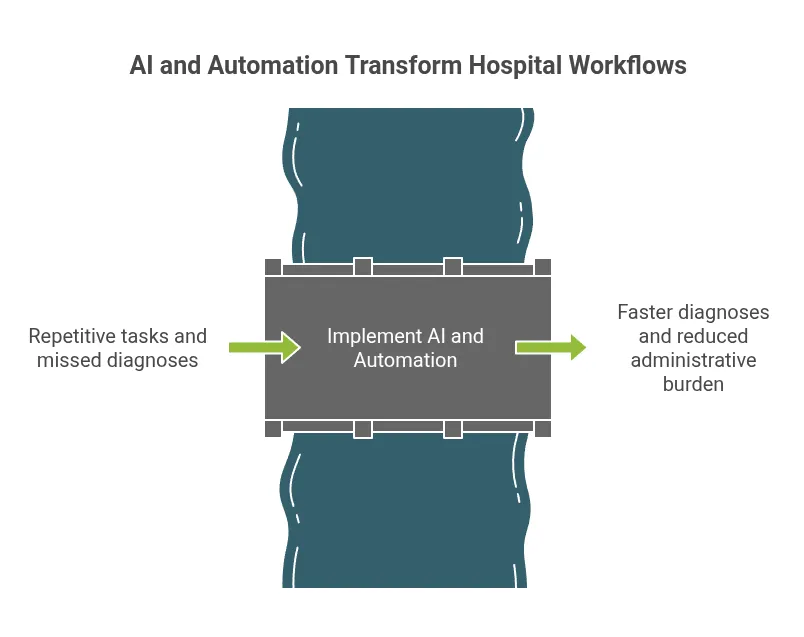Table of Contents
What are the big healthcare technology trends shaping 2025? From AI to remote patient monitoring, new tools are changing how care is delivered. Here’s a look at the top health tech trends for 2025 you need to know.
Why Healthcare Software Development Trends Are Game-Changer
The healthcare IT market is set to hit $511 billion by 2027, growing at 13.8% annually. Why? Digital health trends 2025 are tackling real problems—burnout, access gaps, and data security. I’ve seen how clunky hospital systems frustrate staff, so these advancements feel personal.
AI and Automation in Hospital Workflows

AI is everywhere, and healthcare IT trends show it’s reshaping diagnostics and admin tasks. Tools like Idoven analyze ECGs with precision, catching issues humans might miss. Automation, like robotic process automation (RPA), cuts repetitive tasks, saving time for patient care.
- AI Diagnostics: Spots cancer or heart issues early using image analysis.
- Admin Automation: Handles scheduling and billing, reducing staff stress.
- Example: The Mayo Clinic uses AI-driven threat detection to secure data.
But here’s the catch—AI isn’t foolproof. Bias in data or model drift can skew results, so hospitals must monitor these tools closely.
Rise of Personalized Health Apps
Digital health trends 2025 are all about you, the patient. Apps like FitBit or Moodmon track your vitals and mental health, offering tailored advice. Personalized medicine, using your genetic data, is growing too—think custom drug plans based on your DNA.
- Patient Empowerment: Apps let you manage chronic conditions at home.
- Genomics Impact: Bupa’s pilot tests 14,000 patients for 60+ conditions.
- Question: How would you feel about an app predicting your health risks?
I think these apps are great, but I worry about data privacy. Who’s got access to your genetic info?
Remote Patient Monitoring Trends
Remote patient monitoring trends are booming, with the market projected to reach $88 billion by 2030. Wearables like smartwatches or glucose monitors send real-time data to doctors, cutting hospital visits. This is huge for rural areas where specialists are hours away.
- Chronic Care: Tracks diabetes or heart conditions from home.
- Post-Surgery: Monitors recovery, reducing readmissions.
- Example: Philips’ devices integrate with EHRs for seamless data flow.
The downside? Devices often store non-interoperable data, making it tough for doctors to get a full picture.
Cloud-Based and Hybrid Infrastructure
Cloud systems are the backbone of health tech trends 2025. They’re scalable, cost-effective, and store massive datasets. Hybrid setups mix cloud and on-site systems for flexibility, but they need strong cybersecurity to protect patient data.
- Benefits: Cloud cuts IT costs by up to 40%, per Forrester.
- Challenges: Legacy systems slow adoption and raise security risks.
- Personal Take: I’ve seen outdated hospital tech crash—cloud could fix that.
Hospitals dragging their feet on modernization might face 20% more cyber incidents by 2026. That’s a scary thought.
Interoperability and Data-Sharing Platforms
Ever had your records stuck at one clinic? Interoperability fixes that. The 21st Century Cures Act pushes data sharing, and FHIR standards make systems talk to each other. This fuels AI tools and remote patient monitoring trends.
- FHIR APIs: Enable secure, real-time data exchange.
- Impact: Hong Kong’s eHealth connects public and private providers.
- Concern: Data silos still exist, slowing progress.
I’m optimistic, but some hospitals resist sharing—maybe it’s about control?
Cybersecurity Healthcare Trends
Cybersecurity healthcare trends are critical as data breaches skyrocket—86% of 2025 breaches were hacking-related. With healthcare generating 30% of global data, protecting it is non-negotiable. Tools like encryption and blockchain are stepping up.
- Measures: Multi-factor authentication and AI threat detection.
- Example: The Mayo Clinic uses encryption to secure EMRs.
- Risk: IoMT devices, like smart inhalers, are new breach targets.
I get nervous thinking about my health data being hacked. Are we doing enough?
Key Takeaways
Healthcare technology trends in 2025 focus on AI, remote monitoring, and secure data systems. Personalized apps empower you, while cloud and interoperability streamline care. Cybersecurity healthcare trends are vital to keep your data safe. These advancements promise better care, but challenges like bias and legacy systems linger.
FAQs
Q1. What are the key software trends in healthcare for 2025?
AI diagnostics, remote patient monitoring, personalized apps, cloud infrastructure, interoperability, and cybersecurity dominate. They improve care access, reduce costs, and protect data, though integration hurdles remain.
Q2. Is AI a trend in healthcare development?
Yes, AI is huge. It powers diagnostics, like spotting cancer in scans, and automates tasks like billing. But it needs careful oversight to avoid bias or errors.
Q3. What technologies are shaping the future of medical software?
AI, 5G, IoMT, cloud computing, and blockchain are key. They enable real-time monitoring, secure data sharing, and personalized care, transforming how you interact with healthcare.